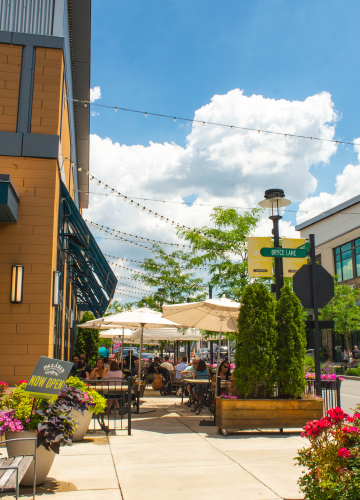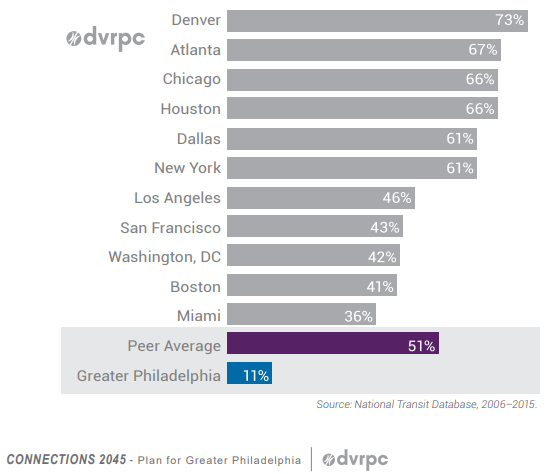
As with all major transportation investments, KOP Rail’s future phases will be funded with a combination of federal, state, regional, and county funds; private investment; and innovative finance options. SEPTA will seek up to 50% of the project’s funding from the Federal Transit Administration’s (FTA) New Starts Program, a competitive federal grant that could fund up to 50% of costs.
New Starts provides approximately $2.3 billion per year in federal funding to light rail, heavy rail, commuter rail, streetcar, and bus rapid transit projects across the United States, including extensions to existing systems like the Norristown High Speed Line. SEPTA will seek federal funding for KOP Rail separate from other transit projects and not re-direct federal money from Philadelphia transportation needs or potential projects. Many regions have multiple projects in the New Starts program pipeline at a given time.
In order to apply for the New Starts program, FTA requires the development of a financial plan. A 20-year Financial Plan, currently in development, will consider a wide range of future funding options.
KOP Rail was named as one of SEPTA’s four projects of regional significance in the Southeast Partnership for Mobility’s Final Report (March 2019). The Southeast Partnership for Mobility is a collaboration between the Pennsylvania Turnpike Commission (PTC) and Southeastern Pennsylvania Transit Authority (SEPTA) in coordination with the Pennsylvania Department of Transportation (PennDOT). It was created in late 2017 to develop a blueprint to meet the region’s growing mobility challenges and to identify solutions to address the changes coming to Act 44, which currently funds transportation in Pennsylvania. The Partnership formed a cross-sector advisory council of major regional employers, civic leaders, local elected officials, and transportation agencies whose views are reflected in the Southeast Partnership for Mobility report.
Southeast Pennsylvania generates 41% of the state’s total economic activity and is home to 32% of its population on just 5% of its land. Other regions around the country are investing significantly more local dollars into transit capital funding. For example, the graph to the right, taken from Greater Philadelphia’s Long Range Plan Connections 2045, shows that Greater Philadelphia invests significantly fewer local funds into transit capital funding than similar regions.

Source: DVRPC 2017
